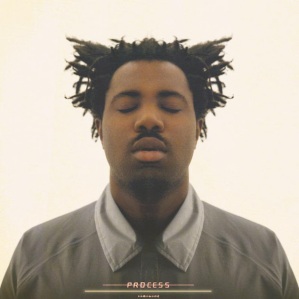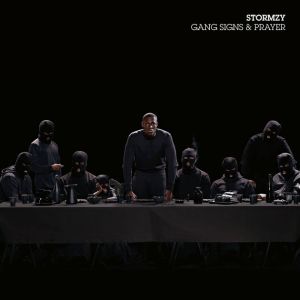Best of February. No Particular Order.
Sampha-Process

Sampha has been lurking in the shadows for years as a songwriter and collaborator; Kanye, Frank, and Solange look good on a resume, but this album was Sampha’s chance to jump out into the spotlight. On all accounts, Process is a victory. Perfect instrumentals fill every corner of the work from modest piano/voice tracks to risky drum charts and sweeping backing vocals. Sampha’s words are heartfelt throughout, addressing everything from the importance of his mother, to the tough aspects of relating to one’s family members and a few tunes about overcoming heartbreak. It’s an emotional journey that also happens to include some early contenders for best single of the year.
Priests-Nothing Feels Natural

Stormzy-Gang Signs & Prayer

Stormzy will tell you himself that this debut record was a long time coming. Since gaining recognition as best grime act in the 2014 MOBO awards, he’s been a bit aloof, releasing only singles, mixtapes and music videos. The air gets cleared quickly on Gang Signs & Prayer as each of the first three tracks hit hard and emphasize—convincingly—that there’s nothing to worry about—Stormzy is clocked in a ready to go. He also quickly convinces us that he’s not one dimensional with a gospel number and later features offered by Kehlani and Nao. Perhaps the album is a bit of a mixed bag and perhaps a few too many tunes gush with excess, but this record showcases a dynamic songwriter who commands each and every minute with his striking personality.
Julie Byrne-Not Even Happiness

There are certain formulas that have stood the test of time and the folk singer/songwriter equipped with acoustic guitar is clearly one of them. Although the pillars of the 1960s and 70s—Dylan and Mitchell—might still be the ones truly at the tip of your tongue when the topic is brought up, Chapman, Elliot, and Sufjan have carried us on to modern day. Aided by some blissfully subtle decisions from producer Eric Littman, Julie Byrne has carved out a nice niche for herself on Not Even Happiness. The album’s transient landscape effortlessly maintains a natural sensibility, while also tapping into some gorgeous electro-acoustic findings. Byrne’s lyrics are beautifully introspective and focused so the album reads as a personal journey with words of wisdom for all people.
Lisa Mezzacappa-avantNOIR

On AvantNOIR, Lisa Mezzacappa showcases a knack for achieving a great overall ensemble sound in an aesthetic that strikes a balance between noisy avant-garde jazz and more straight-ahead materials. Beginning with a quirky three-minute tune, diving into some ambient realms in the middle, and ending with a floating, back-beat jolt, this album truly offers seven contrasting tunes, yet there’s a moody quality that connects each number. Mezzacappa has been around the bay-area jazz scene for quite some time now, but this is my personal introduction to her music and it’s clear that she will become a staple of my jazz listening for years to come.






